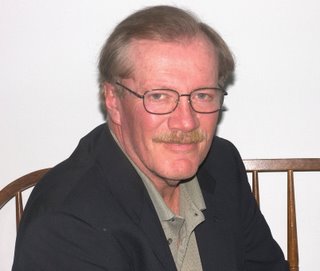
South Koreans have
found road to success,
but do we want our
girls to sacrifice
education for golf?
By DAVE ANDREWS
An American journalist and avid follower of the Futures Tour in America.
This past week, the Ladies European Tour (LET) and the Korean Ladies Professional Golf Association (KLPGA) co-sanctioned a tournament in South Korea. When the final results were posted at the Saint Four Ladies Masters, players from South Korea had captured the top 14 places in the tournament. The best finish by a European player was a tie for 15th place.
Following is an excerpt from an article that was posted on the LET website…
This past week, the Ladies European Tour (LET) and the Korean Ladies Professional Golf Association (KLPGA) co-sanctioned a tournament in South Korea. When the final results were posted at the Saint Four Ladies Masters, players from South Korea had captured the top 14 places in the tournament. The best finish by a European player was a tie for 15th place.
Following is an excerpt from an article that was posted on the LET website…
"According to officials from the KLPGA, golf is part of the school curriculum in Korea and for students who choose golf as their main sport at the age of 13, it is compulsory to practise for a minimum of two hours a day, seven days a week.
"This may help to explain why the top 14 places were filled with Korean names this week, and they comprise almost a third of the world’s top 100 ranked players."
The approach that South Korean society has been taking towards women’s golf over the last ten years is unique. The country’s focus on developing young talent is unparalleled anywhere else in the world.
The approach that South Korean society has been taking towards women’s golf over the last ten years is unique. The country’s focus on developing young talent is unparalleled anywhere else in the world.
Ever since 1998 when Se Ri Pak won the U.S. Women’s Open and the LPGA Championship in her rookie year on the LPGA, there has been an explosion in golf in South Korea, especially among young teenage girls.
Pak became an instant national icon… a heroine to many young girls who had never picked up a golf club in their lives. Almost overnight, South Korean parents began signing up their daughters for golf lessons at the country’s relatively few courses (there are more courses in Florida than in all of South Korea).
As huge numbers of South Korean girls began playing golf, many of those who were identified as having potential began intense training in the sport. South Korean parents, with the encouragement and support of the South Korean government and private corporations, immersed their daughters in the game as soon as their natural ability became apparent.
As huge numbers of South Korean girls began playing golf, many of those who were identified as having potential began intense training in the sport. South Korean parents, with the encouragement and support of the South Korean government and private corporations, immersed their daughters in the game as soon as their natural ability became apparent.
In many cases golf became the central focus of 13, 14 and 15 year old girls, to the exclusion of almost everything else in their young lives including, in some cases, receiving a standard high school education.
Not many American parents would want their young teenage daughters to devote as much time to a single sport as South Korean girls do. The general attitude in this country (United States) is that kids should have well-rounded upbringings with their educations as the primary focus. Girls and boys in this country are encouraged to play several sports and to cultivate other interests outside of the classroom.
Not many American parents would want their young teenage daughters to devote as much time to a single sport as South Korean girls do. The general attitude in this country (United States) is that kids should have well-rounded upbringings with their educations as the primary focus. Girls and boys in this country are encouraged to play several sports and to cultivate other interests outside of the classroom.
An American girl who develops a talent for golf and plays on a team in high school typically also plays one or two other sports. Those who excel in golf often go on to play in college programs, many receiving athletic scholarships.
The ones who progress in college often set their sights on a career as a professional golfer. However, by that time they are already years behind the better South Korean golfers in terms of time and practice devoted to the game. Many of these 17, 18, and 19-year-old players from South Korea have already reached LPGA-calibre levels in their games.
Last month a young woman player left the University of Florida women’s golf team believing that the development of her game was actually being hurt by playing college golf at one of the best women’s golf programs in the country.
Last month a young woman player left the University of Florida women’s golf team believing that the development of her game was actually being hurt by playing college golf at one of the best women’s golf programs in the country.
Her name is Hannah Yun. Last year, as a 15-year-old freshman, (yes, just 15), Yun was named to the All-SEC team. While she was born here in the United States, Yun’s parents are originally from South Korea. They have devoted themselves to helping her become a professional golfer ever since she was 12 years old when she developed a love and natural talent for the game. Since leaving college, Yun is now spending ten hours a day, six days a week, at the private golf academy where she spent five years before going to college.
She plans to play a full season on the Duramed Futures Tour in 2009, and she hopes to receive permission to play as a professional on the tour. At just 16, she will need a special waiver from the tour.
The single-minded approach of Yun and her parents is something that most American teenage girls and parents cannot relate to. It is, however, the primary reason explaining the rise to dominance of South Korean women in professional golf. Just eight years ago there were only six South Korean players in the top 150 on the LPGA’s money list. Today there are 37.
The single-minded approach of Yun and her parents is something that most American teenage girls and parents cannot relate to. It is, however, the primary reason explaining the rise to dominance of South Korean women in professional golf. Just eight years ago there were only six South Korean players in the top 150 on the LPGA’s money list. Today there are 37.
Over that same period, the number of American players in the top 150 has dropped from 117 to 59. Right now, 17 of the top 50 players on the LPGA money list are from South Korea. There are only 13 Americans in the top 50.
Remember, the U S population is six times greater than South Korea’s, and there is a decades-old history of women’s golf in this country compared to just a few short years in South Korea.
The intensity, focus, and strong work ethic developed at an early age continue for many young South Korean players who make it to the LPGA or the Duramed FUTURES Tour, the LPGA’s developmental tour.
The intensity, focus, and strong work ethic developed at an early age continue for many young South Korean players who make it to the LPGA or the Duramed FUTURES Tour, the LPGA’s developmental tour.
In women’s professional golf, perhaps nobody devotes more time or works harder on their games than players from South Korea. At professional events here in this country, South Korean players are often among the first on the practice greens and driving ranges in the early morning. They are often among the last ones to leave at the end of the day.
The South Korean approach to women’s golf will continue to be debated. As the debate goes on, don’t be surprised a few years from now if there are even more Koreans than Americans on the leaderboards at LPGA events.
The South Korean approach to women’s golf will continue to be debated. As the debate goes on, don’t be surprised a few years from now if there are even more Koreans than Americans on the leaderboards at LPGA events.
Last week South Koreans took the first 14 places competing in an event with top European pros. The same could be seen at an LPGA event here in the United States if the current trend continues.
Labels: Pro Ladies









<< Home